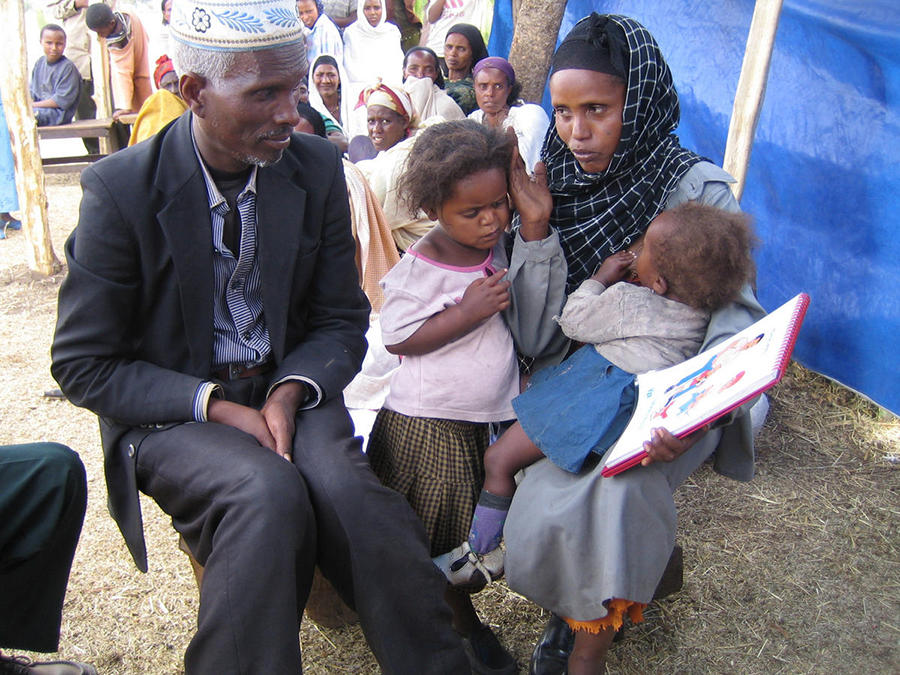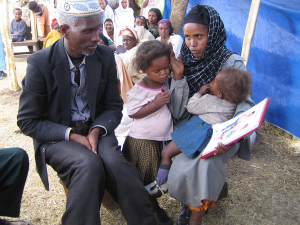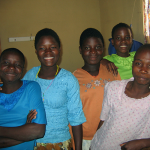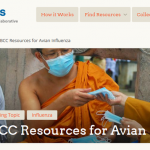Faith Communities Matter in Social and Behavior Change Communication Programs for Child Survival
Mobilizing faith communities to spread public health messages and lead others toward making healthier decisions was the topic of a recent webinar hosted by the Health Communication Capacity Collaborative (HC3).
Titled The Role of Faith-Based Communities in Social and Behavior Change Communication Programs for Child Survival, the webinar was designed to give audiences insight into incorporating faith-based assets, such as faith leaders, texts, and activities into social and behavior change communication (SBCC) programming to encourage healthier behaviors that lead to improved child survival outcomes.
Senior advisor of USAID’s Center for Faith Based and Community Initiatives, Pamela Wyville-Staples, said that millions of children die from causes we know how to prevent, adding that “faith leaders and organizations are not only fundamental to delivering services to those who need them most, but also to ensuring that host governments follow through on commitments.”
Globally, the number of child deaths has dropped from nearly 12 million in 1990 to 6.3 million in 2013 with many countries greatly reducing their high rates of child mortality. But, rates of child and maternal death remain unacceptably high, Wyville-Staples said. As such, more than 175 countries and over 400 civil society and faith-based organizations convened in 2013 where the pledge known as A Promise Renewed was signed to support a single, comprehensive and achievable goal: Ending preventable child deaths by 2035. In support of A Promise Renewed, members of the faith communities committed to Ten Promises to Our Children.
Additionally, Wyville-Staples announced that the U.S. government is realigning up to $2.9 billion toward saving 8 million children’s lives and 350,000 women’s lives in Africa alone.
Religions for Peace International (RFPI) was one of the signers of the Ten Promises and acted on the call, said Deepika Singh, director of programs, RFPI. In Myanmar, for example, RFPI trained 600 mothers and young women on the Ten Promises in vulnerable communities in surrounding Yangon. Even in communal strife areas, this initiative brought together diverse religious leaders and beneficiaries due to it being implemented through multi-religious collaboration, she said.
In Kenya, UNICEF and RFPI Inter-religious Council of Kenya have engaged more than 400 religious leaders, tribal elders, women and youth who are now at work in their communities advocating for alternative rites of passage. Religious leaders there are working to reduce violence associated with rites of passage that perpetuate inter-ethnic conflict among the five major tribes located in Isiolo.
RFPI’s Faith for Life program enables the organization to reach religious leaders at all levels (international, national, grass-root and congregational members).
“The use of the religious leaders and the pulpit to disseminate…messages is a powerful tool for information sharing as religious leaders have extensive networks and grassroots reach,” Singh said.
Demonstrating how effective this type of approach can be, Johns Hopkins Center for Communication Programs (CCP) Maternal, Newborn and Child Health advisor Amrita Gill-Baily shared data on how Imams and other religions leaders impacted family planning efforts in the Family Health Program in Jordan.
The mission of this program was to “create a supportive environment for gender equity, birth spacing and reproductive health through religious leaders, namely imams, wa’izat and awqaf directors,” Gill-Baily said. It was to do that by promoting healthy lifestyles, gender equity and reproductive health and family planning.
The program activities incorporated religious leaders in a variety of creative ways, including:
- TV and radio spots on gender equity and birth spacing, using verses from the Qur’an.
- Training Ministry staff and religious leaders on the “Family Health Package,” including family sermon booklets, flash cards and films.
The program explored the role of religious leaders in promoting family welfare, male-female relationships in Islam, Islam and family health, safe motherhood, and spacing pregnancies.
What they found was that compared with the baseline, religious leaders who were exposed to the program were significantly more likely to:
- Register positive attitudes about family planning.
- Believe that a wider range of contraceptive methods are acceptable according to Islamic teachings.
- Preach or counsel about a wider range of topics related to family planning and population as well as about gender equity among men during the previous three months.
Further, they found that Mosque congregants in the most recently studied intervention area (the city of Irbid) in 2012 recalled hearing Family Health Program messages during the previous six months and were significantly more likely to take action because of this exposure. A study conducted the year before in the city of Zarqa also showed similar findings.
From Nigeria, the Christian Health Association of Nigeria (CHAN) director of programs, Nanle Peter Walman, provided two examples of its success in using religious leaders to promote health.
As part of an immunization campaign in partnership with the Nigeria Federal Ministry of Health and UNICEF, CHAN mobilized religious and community leaders to call for immunizations during sermons, dispel myths and misinformation about immunizations, and to guide community members to immunization sites by building a database for them and coaching them on how to use it to guide others to the sites. CHAN’s role was critical in reaching the hard to reach, Walman said.
In another example, Walman demonstrated the powerful voice of religious leaders in public health advocacy. From many denominations, religious leaders in Nigeria worked together to advocate for additional resources from a state government in Nigeria for ambulances, health center renovations and equipment, medical personnel and even access roads to hospitals in hard to reach areas. They received more than 2 million Nigerian naira (US$10,600) from the state.
HC3 highlighted a new tool to support faith-based organization in their child survival work: the SBCC I-Kit to support FBO-led Breastfeeding Interventions, found here.
Presentations and a recording of the webinar can be found here.









Leave a Reply
Want to join the discussion?Feel free to contribute!